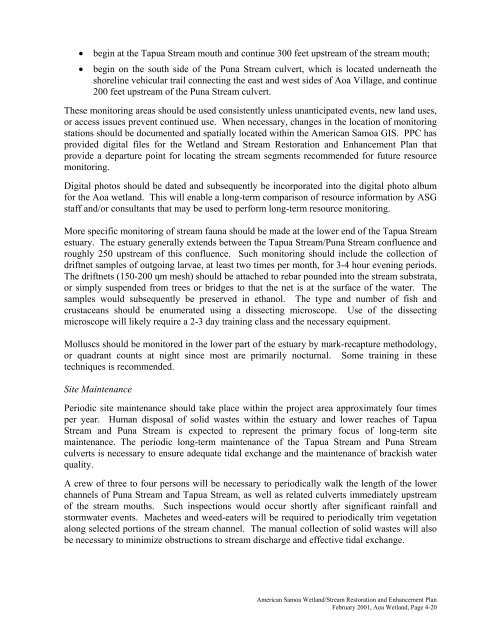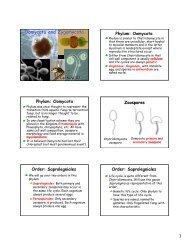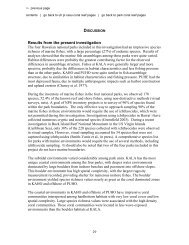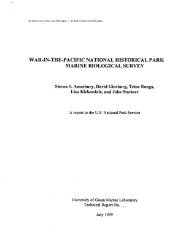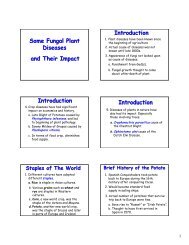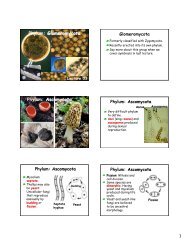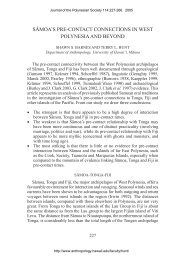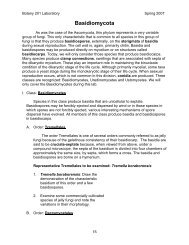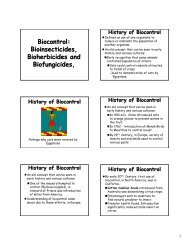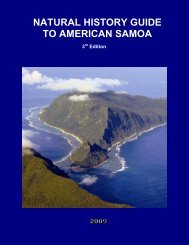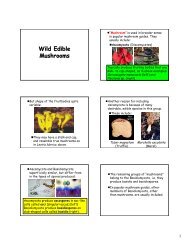american samoa - University of Hawaii at Manoa Botany Department
american samoa - University of Hawaii at Manoa Botany Department
american samoa - University of Hawaii at Manoa Botany Department
- No tags were found...
Create successful ePaper yourself
Turn your PDF publications into a flip-book with our unique Google optimized e-Paper software.
• begin <strong>at</strong> the Tapua Stream mouth and continue 300 feet upstream <strong>of</strong> the stream mouth;• begin on the south side <strong>of</strong> the Puna Stream culvert, which is loc<strong>at</strong>ed underne<strong>at</strong>h theshoreline vehicular trail connecting the east and west sides <strong>of</strong> Aoa Village, and continue200 feet upstream <strong>of</strong> the Puna Stream culvert.These monitoring areas should be used consistently unless unanticip<strong>at</strong>ed events, new land uses,or access issues prevent continued use. When necessary, changes in the loc<strong>at</strong>ion <strong>of</strong> monitoringst<strong>at</strong>ions should be documented and sp<strong>at</strong>ially loc<strong>at</strong>ed within the American Samoa GIS. PPC hasprovided digital files for the Wetland and Stream Restor<strong>at</strong>ion and Enhancement Plan th<strong>at</strong>provide a departure point for loc<strong>at</strong>ing the stream segments recommended for future resourcemonitoring.Digital photos should be d<strong>at</strong>ed and subsequently be incorpor<strong>at</strong>ed into the digital photo albumfor the Aoa wetland. This will enable a long-term comparison <strong>of</strong> resource inform<strong>at</strong>ion by ASGstaff and/or consultants th<strong>at</strong> may be used to perform long-term resource monitoring.More specific monitoring <strong>of</strong> stream fauna should be made <strong>at</strong> the lower end <strong>of</strong> the Tapua Streamestuary. The estuary generally extends between the Tapua Stream/Puna Stream confluence androughly 250 upstream <strong>of</strong> this confluence. Such monitoring should include the collection <strong>of</strong>driftnet samples <strong>of</strong> outgoing larvae, <strong>at</strong> least two times per month, for 3-4 hour evening periods.The driftnets (150-200 ųm mesh) should be <strong>at</strong>tached to rebar pounded into the stream substr<strong>at</strong>a,or simply suspended from trees or bridges to th<strong>at</strong> the net is <strong>at</strong> the surface <strong>of</strong> the w<strong>at</strong>er. Thesamples would subsequently be preserved in ethanol. The type and number <strong>of</strong> fish andcrustaceans should be enumer<strong>at</strong>ed using a dissecting microscope. Use <strong>of</strong> the dissectingmicroscope will likely require a 2-3 day training class and the necessary equipment.Molluscs should be monitored in the lower part <strong>of</strong> the estuary by mark-recapture methodology,or quadrant counts <strong>at</strong> night since most are primarily nocturnal. Some training in thesetechniques is recommended.Site MaintenancePeriodic site maintenance should take place within the project area approxim<strong>at</strong>ely four timesper year. Human disposal <strong>of</strong> solid wastes within the estuary and lower reaches <strong>of</strong> TapuaStream and Puna Stream is expected to represent the primary focus <strong>of</strong> long-term sitemaintenance. The periodic long-term maintenance <strong>of</strong> the Tapua Stream and Puna Streamculverts is necessary to ensure adequ<strong>at</strong>e tidal exchange and the maintenance <strong>of</strong> brackish w<strong>at</strong>erquality.A crew <strong>of</strong> three to four persons will be necessary to periodically walk the length <strong>of</strong> the lowerchannels <strong>of</strong> Puna Stream and Tapua Stream, as well as rel<strong>at</strong>ed culverts immedi<strong>at</strong>ely upstream<strong>of</strong> the stream mouths. Such inspections would occur shortly after significant rainfall andstormw<strong>at</strong>er events. Machetes and weed-e<strong>at</strong>ers will be required to periodically trim veget<strong>at</strong>ionalong selected portions <strong>of</strong> the stream channel. The manual collection <strong>of</strong> solid wastes will alsobe necessary to minimize obstructions to stream discharge and effective tidal exchange.American Samoa Wetland/Stream Restor<strong>at</strong>ion and Enhancement PlanFebruary 2001, Aoa Wetland, Page 4-20


